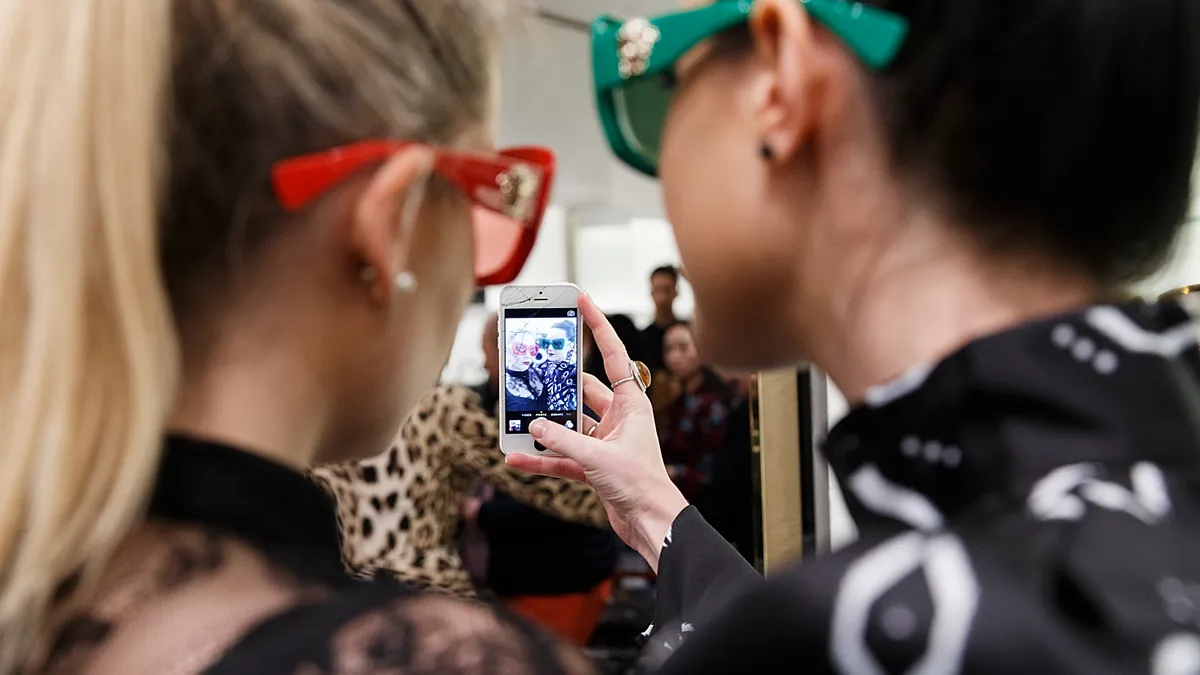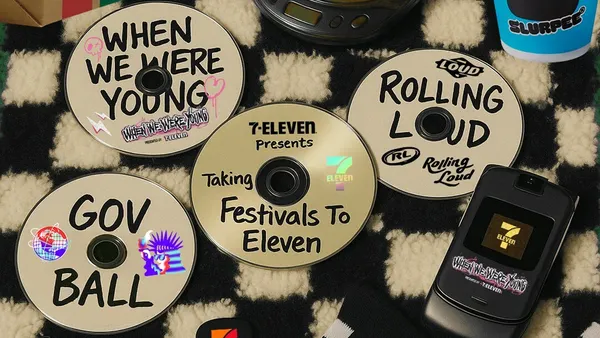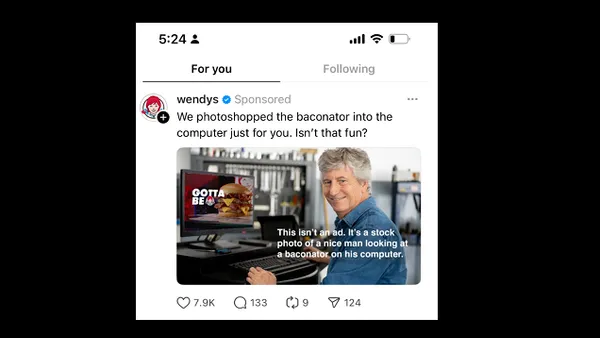Brief:
- Asking people to create user-generated content (UGC) is an inexpensive way for brands to maintain their marketing strategy during the coronavirus pandemic. However, there are key differences in the effectiveness of such campaigns, Visual Objects, a guide for finding creative firms, said in an announcement about its consumer survey results.
- Reviews are the most common method of posting user-generated content (UGC), with 26% of people saying they were likely to offer an opinion of a business on a third-party website. When it comes to engagement, 40% of people use Stories on Instagram, Snapchat or Facebook, while 27% said they had engaged with videos such as livestreams and AR lenses or filters. In addition, 25% of survey respondents had engaged with customer reviews.
- Seventy-five percent of people are unlikely to use a branded hashtag from a company in a post, while 73% said they're unlikely to create branded videos. Only 11% of people said they had interacted with a social media hashtag campaign in the past three months, per the survey. Visual Objects surveyed 401 people about their opinions on creating content for brands, the company said.
Insight:
Visual Objects' survey findings support the idea that prompting consumers to create content is cost-effective for marketers that want to maintain a social media presence during the pandemic, with online reviews being the most likely way for people to create content. Because people trust the opinions of peers more than what brands say about themselves, customer reviews can be an effective UGC marketing strategy.
Visual Objects cited BuzzFeed as an example of a digital publisher that lists popular products along positive reviews from customers. The firm recommends that businesses urge customers to leave reviews in their marketing emails. Because the survey also suggests that most consumers are very unlikely to engage with UGC, marketers should use their video channels to connect with customers and give them an incentive to write reviews.
Because Stories on Instagram, Snapchat or Facebook are the best ways to engage social media users, brands should consider those platforms to gain visibility among target audiences. Videos such as livestreams and AR lenses or filters are somewhat less popular, but may still have applications in campaigns if they're targeted correctly. Snapchat, for example, has countless examples of brands that have run campaigns that include AR lenses and filters to engage social media users.
The study also suggests that branded hashtag challenges have limited appeal, with most Americans saying they don't create videos or posts that use a branded hashtag. Branded hashtag challenges are a key feature of TikTok, the social video app that's popular with U.S. teens. While those challenges can generate billions of views, most people don't feel compelled to participate in them, Visual Objects' survey indicates. Hashtag challenges are better suited for engagement among brand enthusiasts or people who are incentivized to win a sweepstakes, per the report.













